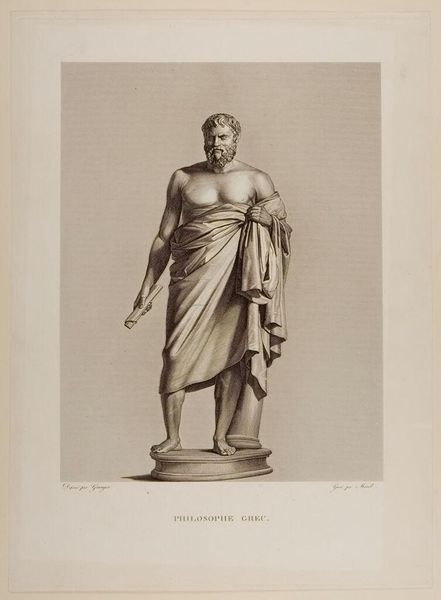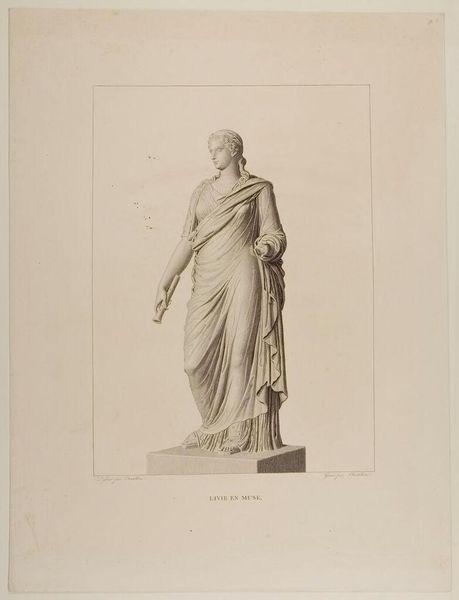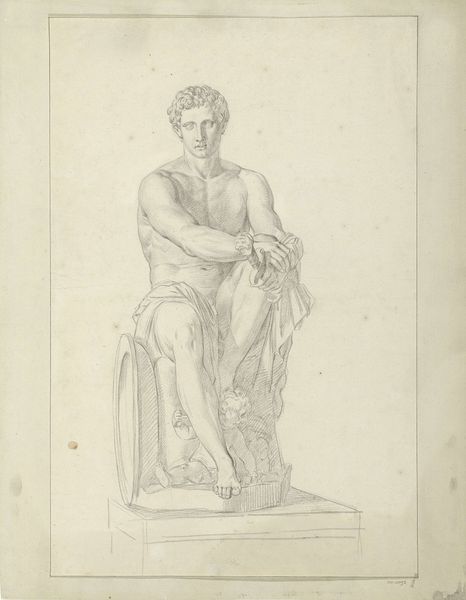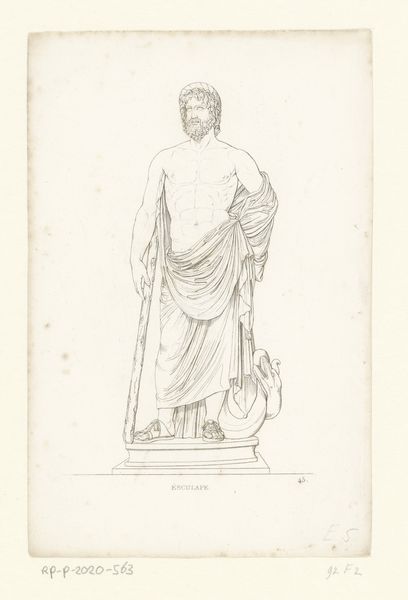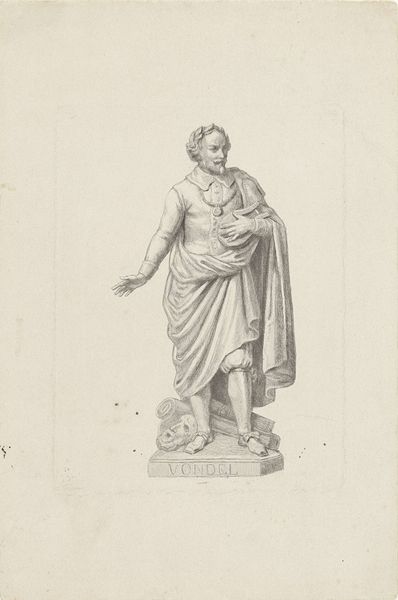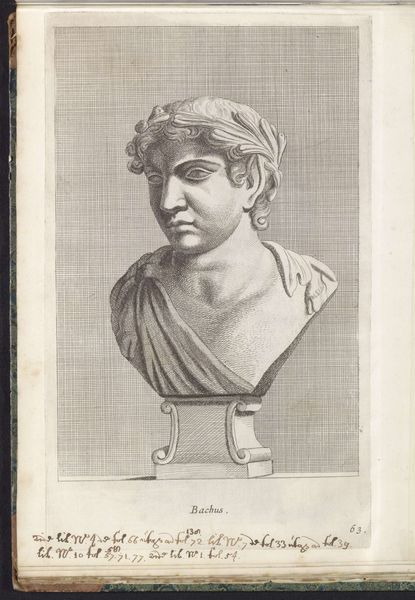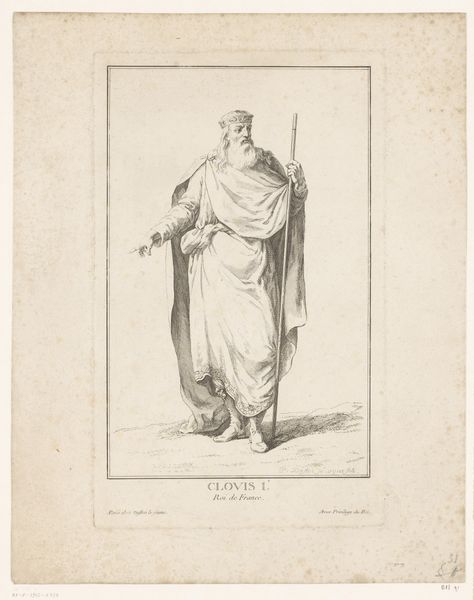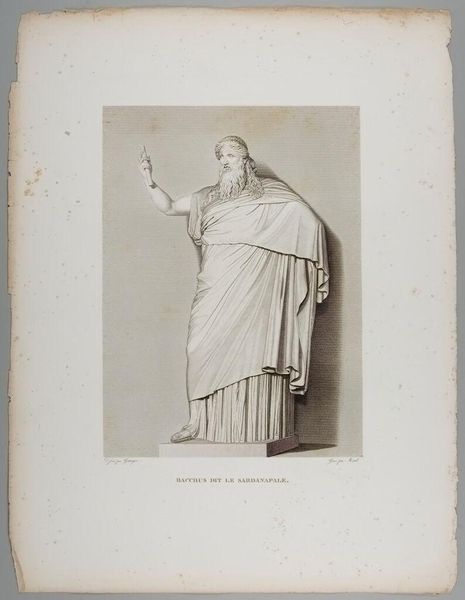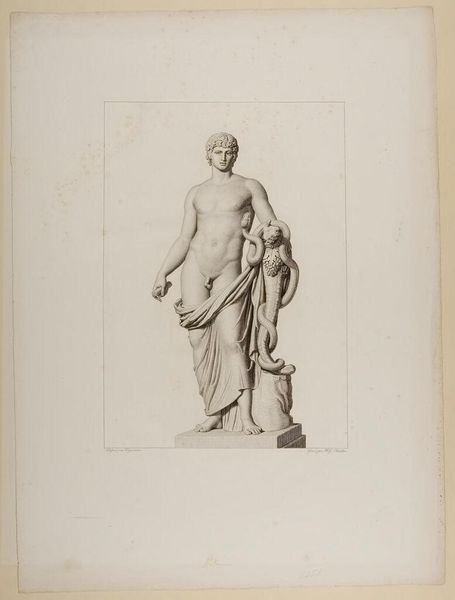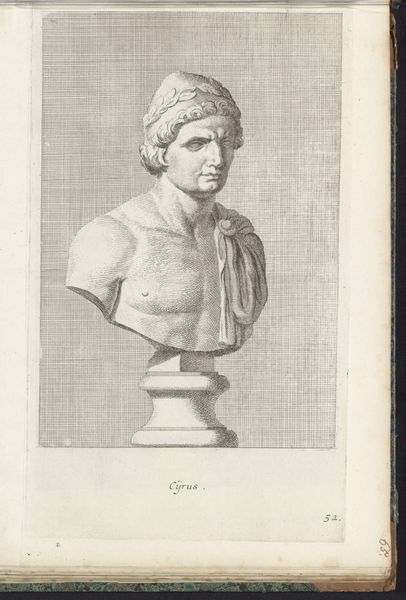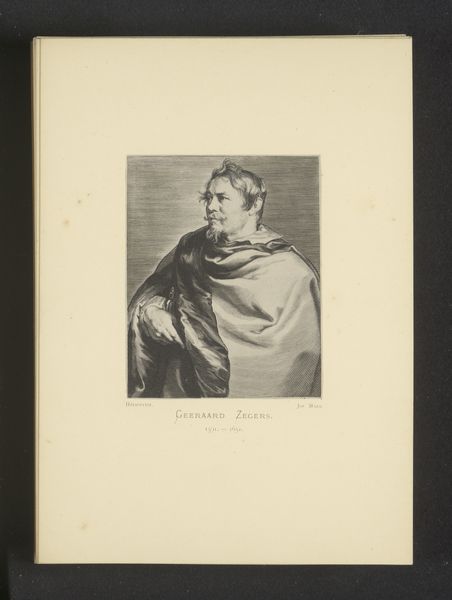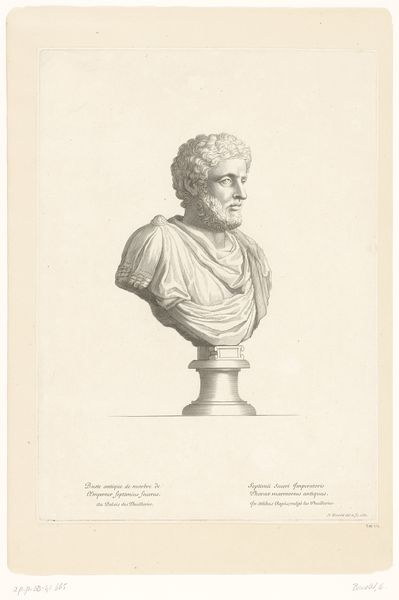
Copyright: CC0 1.0
Curator: This is Giovanni Folo's "Mercury, after the Antique," a print rendering a classical sculpture. The work brings to mind a certain neoclassical austerity. Editor: And yet, that caduceus—the winged staff entwined with serpents—it's such a powerful, loaded symbol, isn't it? It speaks to trade, negotiation, even medicine. Curator: Indeed. Folo, active in the late 18th and early 19th centuries, likely used engraving techniques, which were meticulously demanding, to reproduce the original sculpture. Editor: The figure’s pose, that contrapposto, evokes a sense of dynamic energy. We can almost imagine him in swift motion. Curator: Absolutely. The labor invested in both the original sculpture and its reproduction reflects the value placed on classical ideals at the time. Editor: The details in the drapery are wonderful. It’s a potent reminder of how symbols survive translation across cultures. Curator: It offers a lens into the history of classical influence on later art forms. Editor: Yes, a compelling demonstration of how enduring symbols shape our understanding.
Comments
No comments
Be the first to comment and join the conversation on the ultimate creative platform.

